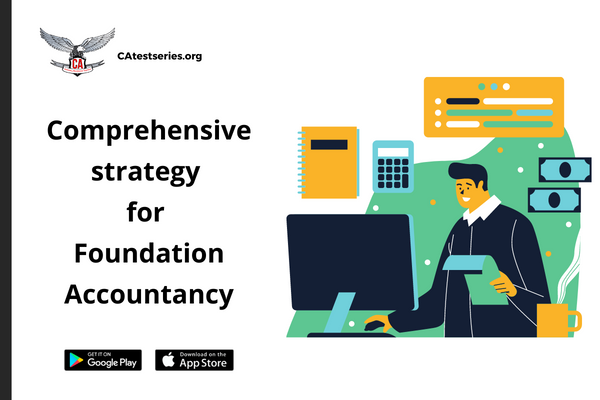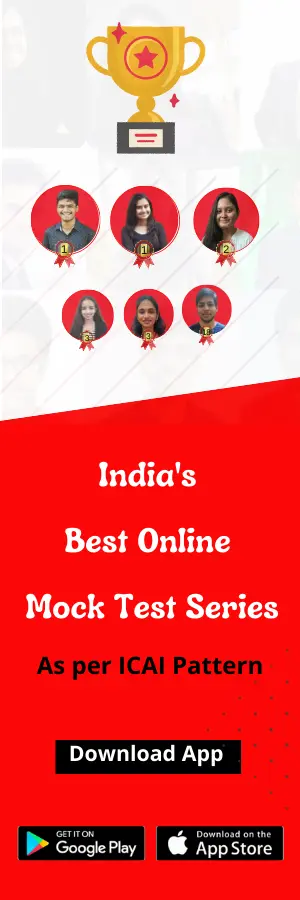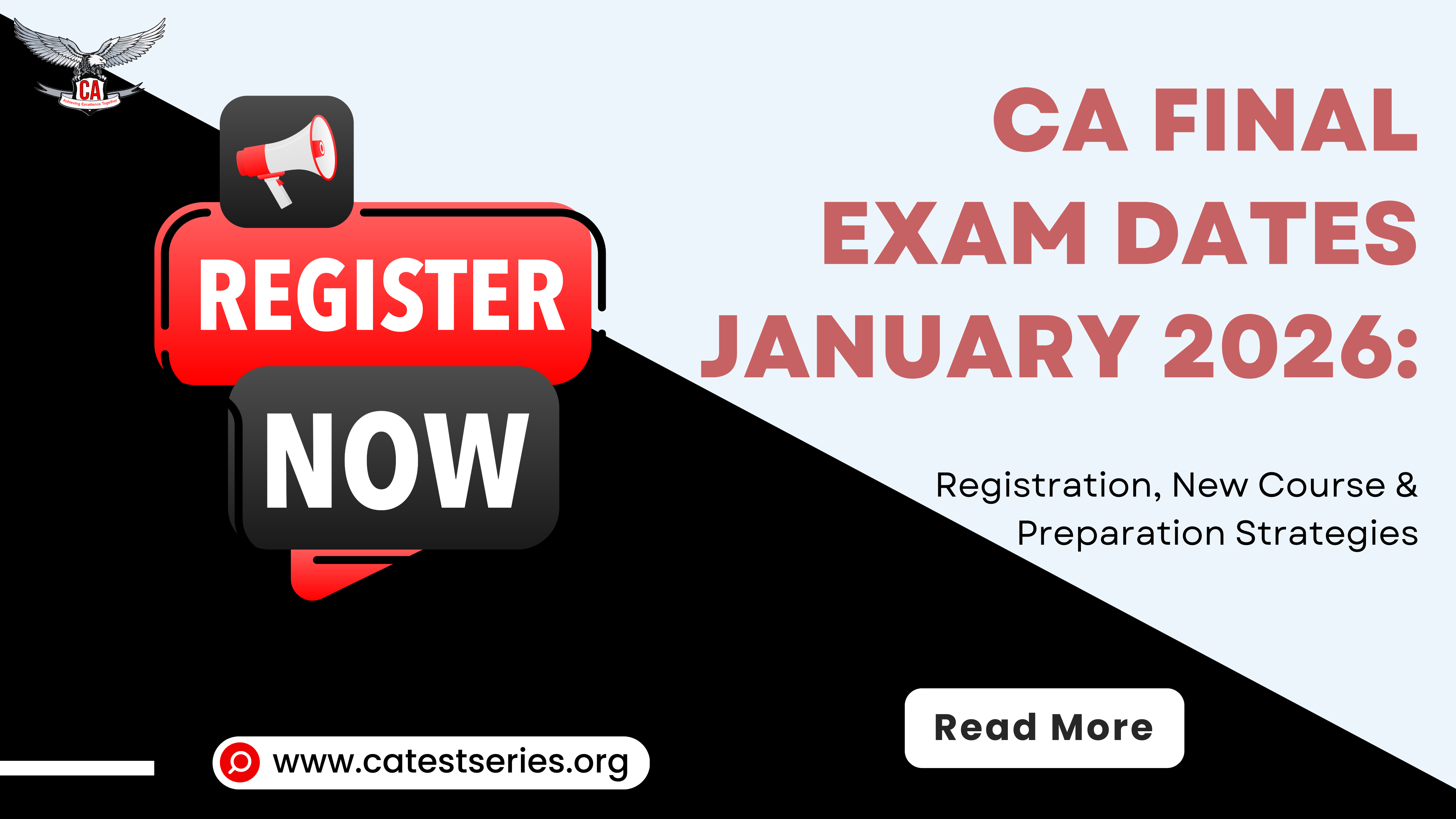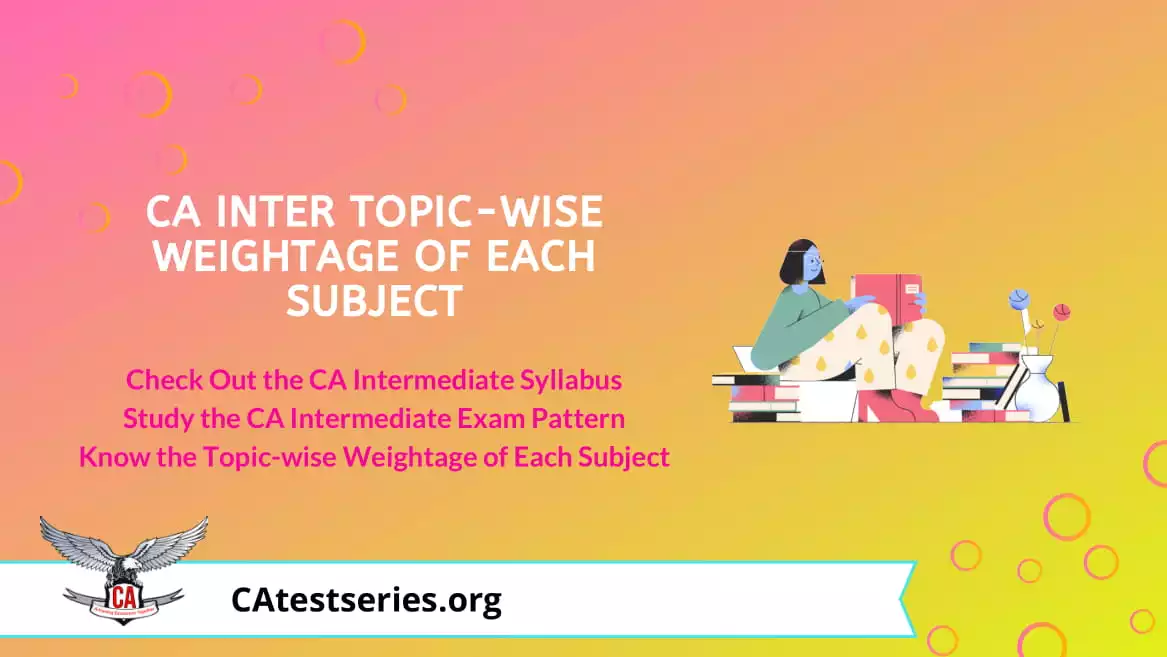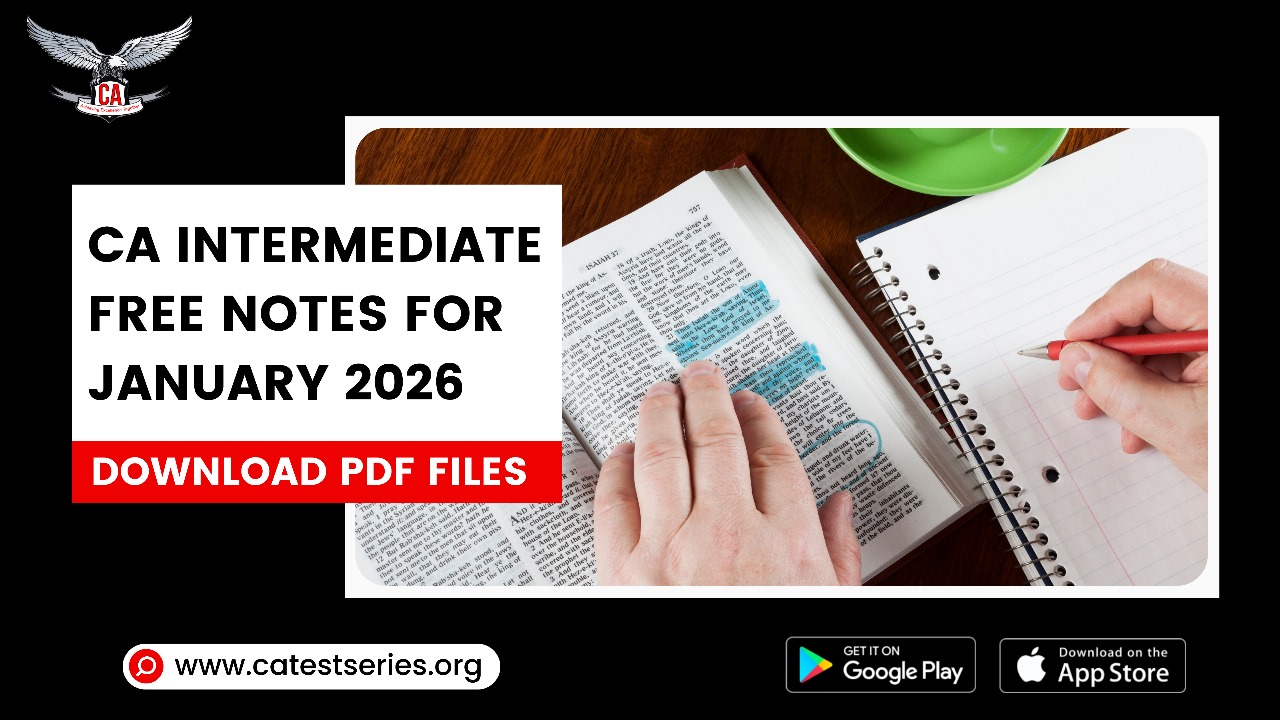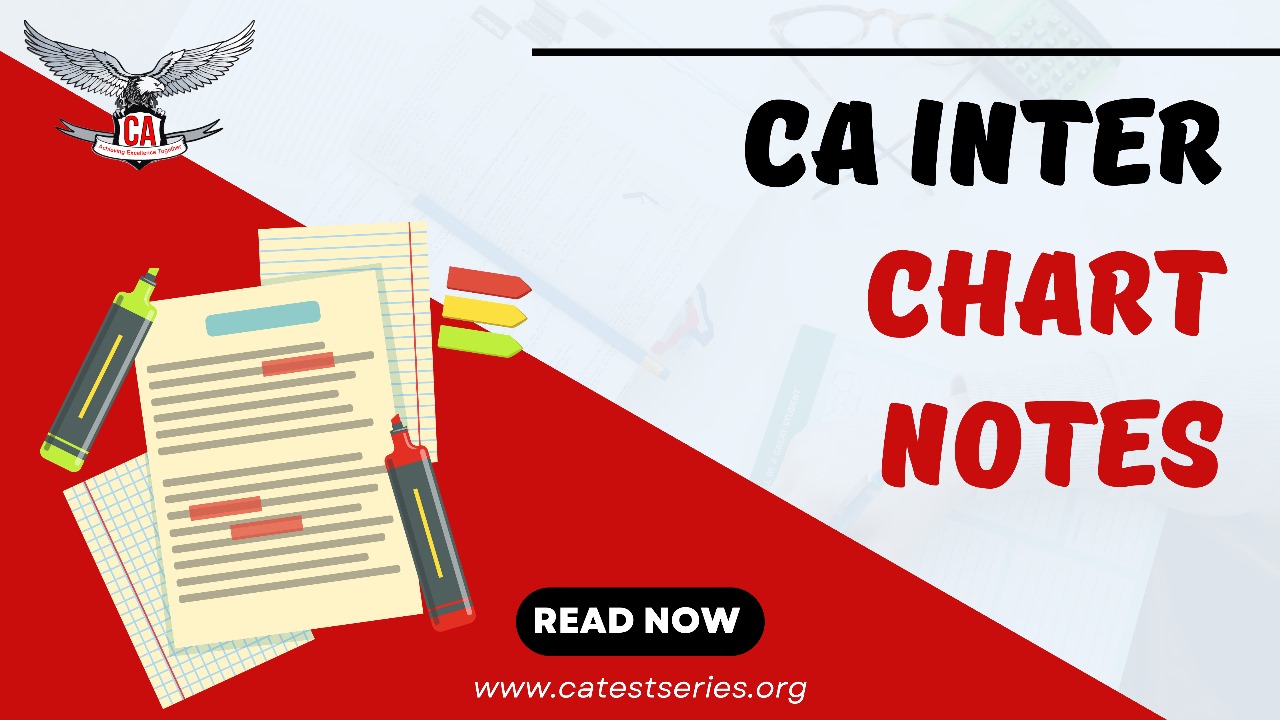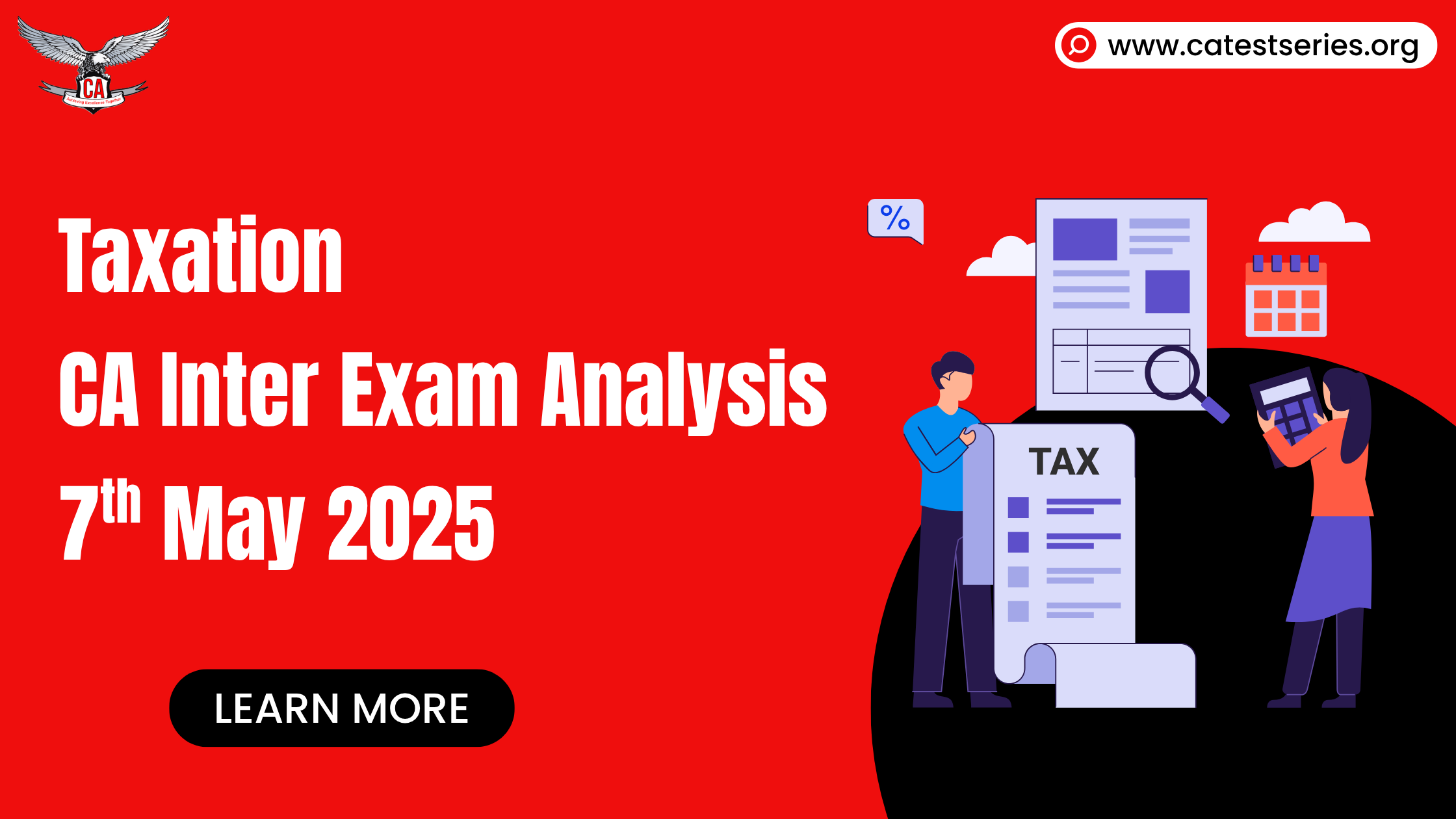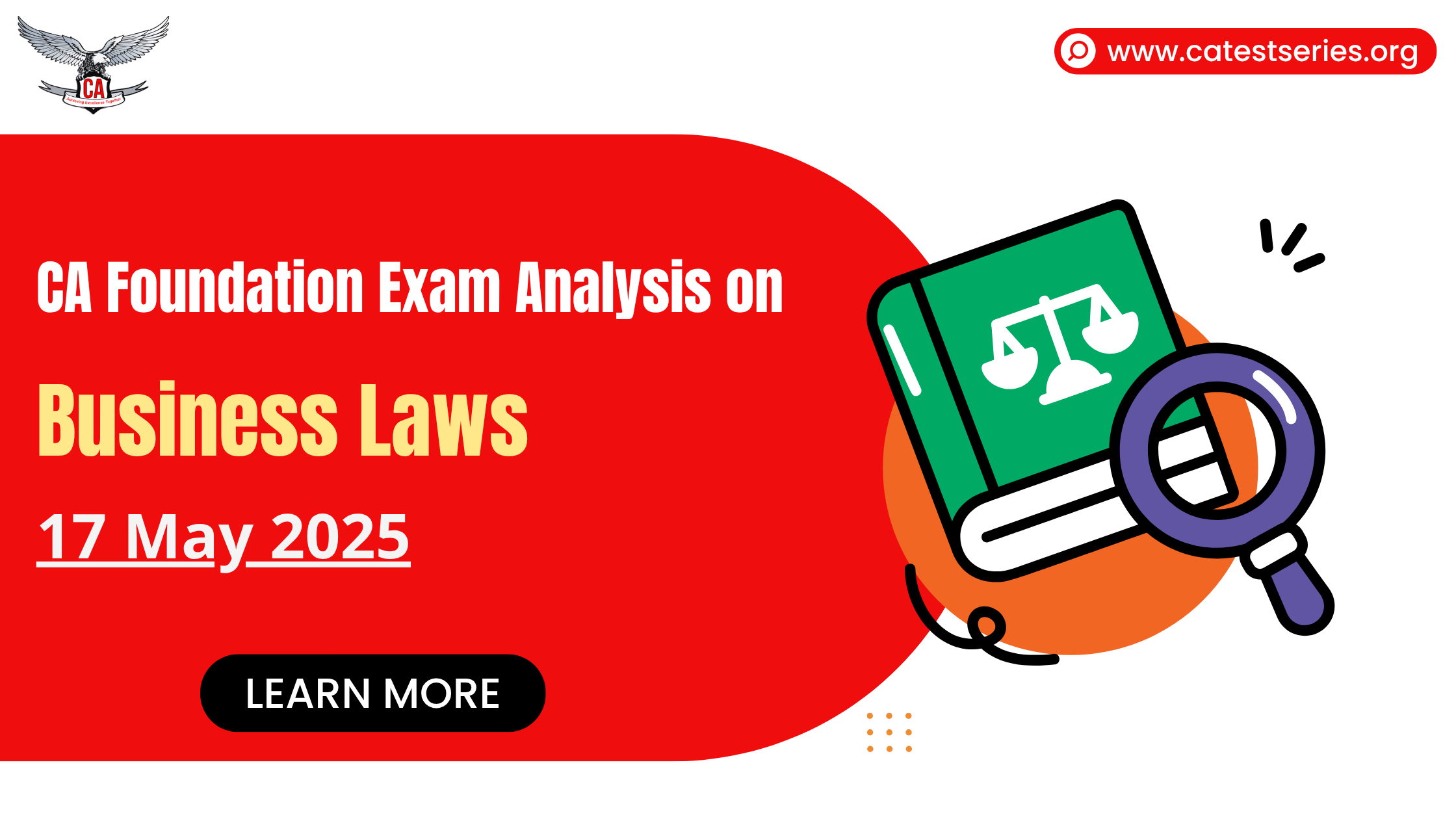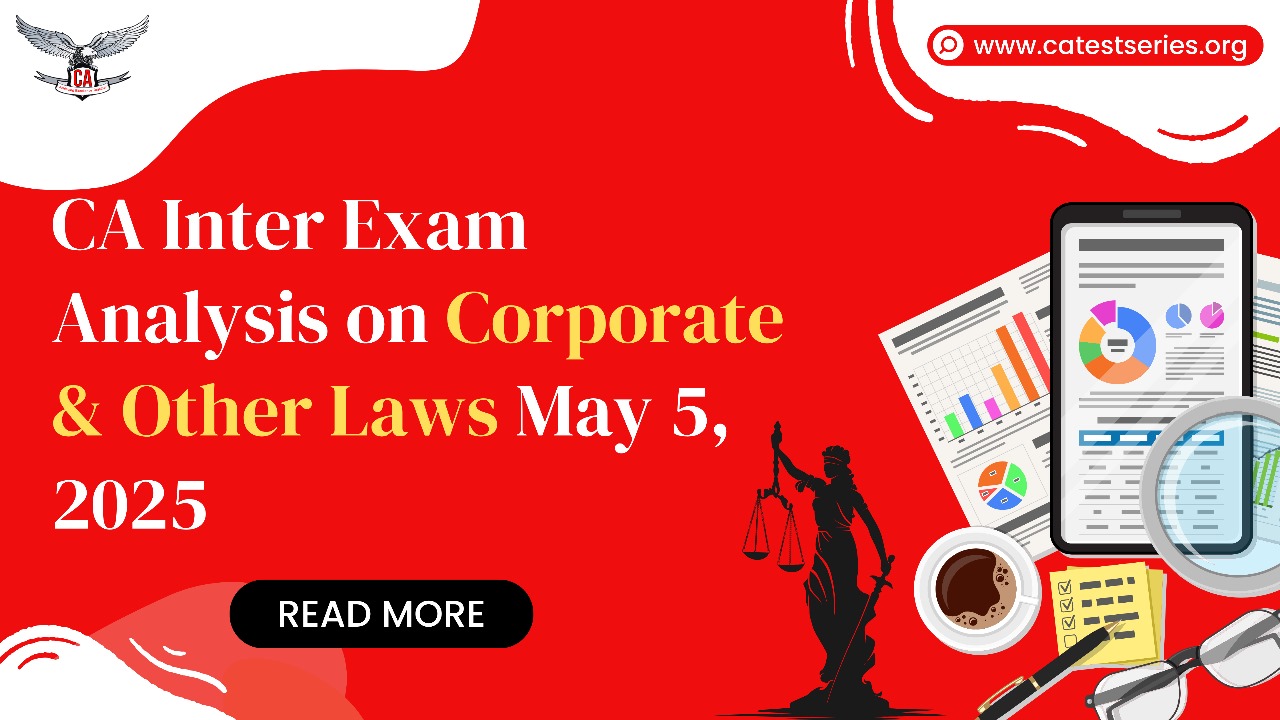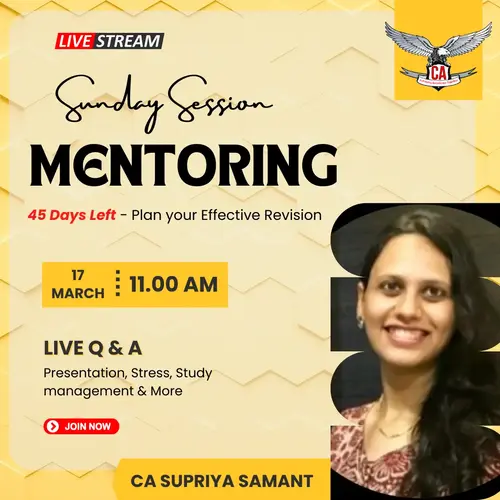Toppers Strategy for CA Foundation Accountancy | Topic wise details are covered
Introduction
It feels difficult to crack the CA Foundation Accounting; however, toppers make it easy by applying smart strategies that help in scoring high in the exams. This blog provides you with a proven topic-wise plan from basic topics like journal entries and ledgers to tricky topics like bank reconciliation, depreciation, and final accounts. You will get the tips to understand the concepts, solve Mock Test papers, make quick revision notes, and avoid silly mistakes in exams. Students must follow the strategies used by the rank holders and practice daily, and then they will observe their marks, which is best for beginners who aim to clear the exam on the first attempt. Lets turn accountancy into your strong subject.
CA Foundation is the entry-level examination to the course, and at the Foundation level, you will be tested for four papers, namely,
- Principles and Practice of Accounting
- Business Laws and Business Correspondence and Reporting
- Business Mathematics, Logical Reasoning, and Statistics
- Business Economics and Business and Commercial Knowledge
It is crucial to understand the subject and thinking ability beyond the ambition of the modules given by the institute. Along with preparation, a robust strategy is necessary to easily qualify for the examination. Through this blog, we make efforts to help you craft a strategy for your preparation and examination.
CA Foundation Principles and Practice of Accounting
About “paper-1 1” CA Foundation:
Principles and Practice of Accounting, with the 1st paper in the CA Foundation, is the 1st one for the whole CA journey. Chartered accountants are known for their proficiency in accounting, and if you are a chartered accountancy student. It is important to think about the concepts of accounting and implement them in practical situations. There are around 80% of the questions that come under the application of the concepts that each student learn in their CA Foundation course. You are familiar with accountancy topics as you have learnt them since class 11th if you had taken the Commerce stream; however, the level of the foundation will be much higher when compared to class 11 and 12th accountancy. So, there is a need to revise and practice the concepts of Accountancy and problems so that you can feel confident during the exam. On the other hand, if you are from a non-commerce background or learning accountancy for the first time, you should be more careful and put more effort into the preparation, and make sure that you understand all concepts and are able to solve them without any difficulty.
Decoding the CA Foundation Accountancy Syllabus
It is very important to get yourself familiar with the topics you must learn and what the institute expects you to learn from those topics. You can get this information by reading the initial pages and preface of the modules.
At the foundation level, there are 10 chapters:
Module - 1 | |
Chapter 1 | Theoretical Framework |
Chapter 2 | Accounting Process |
Chapter 3 | Bank Reconciliation Statement |
Chapter 4 | Inventories |
Chapter 5 | Concept and Accounting of Depreciation |
Chapter 6 | Accounting for Special Transactions |
Module - 2 | |
Chapter 7 | Preparation of Final Accounts in case of Sole Proprietors |
Chapter 8 | Partnership Accounts |
Chapter 9 | Financial Statements of Not-for-Profit Organizations |
Chapter 10 | Company Accounts |
Each of the above-mentioned chapters is very critical for understanding the accounting systems in an organization.
Chapter-wise breakup of the topics
Chapter – 1: Theoretical Framework
- This is a theory chapter that deals with defining the terms “Accounting” and “Accountancy” and their scope. Also explains the jargon used in accounting.
- This chapter also discussed accounting concepts, policies, principles, and conventions.
- This chapter also examines the difference between:
- Capital and revenue expenditure
- Capital and revenue receipts
- Contingent assets and contingent liabilities
- The principle valuation of accounting is discussed briefly in this chapter, and the calculation of the estimation of the accounting follows the prescribed accounting standards or the Indian accounting standards.
- A brief introduction to accounting standards and Indian accounting standards will be provided.
Chapter – 2: Accounting Process
- This chapter presents the process of accounting from the occurrence of the transaction or event to the preparation of the trial balance and rectifying it.
- The process of accounting basically begins with recording journal entries for the transaction or event that has occurred.
- Once the entries are journalized, the posting will be done in the respective ledgers.
- Finally, after preparation of the ledgers, the trial balance is prepared using the ledger balances. Using this trial balance, the final accounts are prepared.
- This chapter takes you through the process of journalizing to the preparation of a trial balance.
- Additional preparation of subsidiary books like purchases, sales, purchase returns, bills payable, bills receivable, and the journal proper book is also discussed in the chapter.
- Also, preparation of cash books is discussed, which involves preparation of a simple cash book, a two-column cash book, and a three-column cash book.
- Finally, the chapter ends with a discussion about rectifying the errors committed in the books, which will be done at three levels:
- When the trial balance is prepared.
- When the final accounts are prepared after the trial balance.
- After the preparation of final accounts in the next accounting period.
Chapter – 3: Bank Reconciliation Statement
This chapter discusses the bank reconciliation statement. This includes Introduction to bank reconciliation statement, reasons for preparation of bank reconciliation statement, and finally, the preparation of bank reconciliation statements.
- This chapter discusses the valuation of the inventory as per the accounting standard 2(AS-2).
- It also discusses the use of different techniques to value inventory.
- And finally, it ends with record-keeping methods of inventory.
Chapter – 5: Concept and Accounting of Depreciation
- This chapter examines depreciation on assets and the reasons for providing depreciation.
- It also enumerates different concepts relating to depreciation and different methods for the computation of depreciation.
- It also discusses the accounting treatment for depreciation in the books of accounts.
- It finally concludes the accounting treatment in the books of accounts when there is a change in the method of depreciation.
Chapter – 6: Accounting for Special Transactions
In Chapter 6, accounting treatments are discussed in the books of accounts for many special transactions, such as accounting for bills of exchange and promissory notes, accounting treatment for goods sent on approval or return basis, and when the organization is involved in consignment business. It also discusses various additional topics like average due date and account current.
- In the area of accounting for bills of exchange and promissory notes, the topics discussed will be the meaning of bills of exchange and promissory notes, and their accounting treatment, and it also discusses accounting treatment for a very special transaction called accommodation of bills.
- In the area of the sale of goods on an approval or return basis, the accounting treatment for the sale in this special transaction will be discussed.
- In the consignment difference between sale and consignment, accounting treatment for consignment will be discussed. In the average due date explanation for the calculation of the average due date, the calculation of the average due date in various situations will be enumerated and discussed.
- In the account current, the meaning of account current and the methods for preparation of account current will be discussed.
Chapter – 7: Preparation of Final Accounts in case of Sole Proprietors
- This chapter deals with the preparation of manufacturing accounts, trading accounts, profit and loss accounts, and balance sheets of the sole proprietor organizations.
- It also discusses various elements of financial statements and the closing adjustment entries passed before the preparation of financial statements.
Chapter – 8: Partnership Accounts
- This chapter deals with the preparation of trading accounts, profit & loss account, and balance sheet of partnership firms.
- It also discusses various scenarios like admission, retirement, and death of the partner, and accounting treatment in those scenarios.
- It talks about computation and treatment of goodwill in the books of accounts.
- This chapter ends with an introduction to limited liability partnerships and distinguishes between a partnership and a limited liability partnership.
Chapter – 9: Financial Statements of Not-for-Profit Organizations
- This chapter deals with the preparation of the receipts and payments account, the income and expenditure account, and the balance sheet of a not-for-profit organization.
- It also discusses various elements involved in the preparation of financial statements, like subscription fees, donations, etc., and their accounting treatment.
Chapter – 10: Company Accounts
- This chapter opens by defining shares and debentures and explaining the provisions relating to them in the Companies Act 2013.
- It also discusses the accounting treatment when shares and debentures are issued, forfeiture of shares, and reissue of forfeited shares.
- It finally ends with the preparation of the statement of profit and loss, the balance sheet as per Schedule III of the Companies Act, 2013
Strategy for CA Foundation Accountancy examination
One can only master accounting by practicing frequently. So, it is very important for students to get a deep understanding of the topics covered in the institute study modules. When you go through all the questions given in modules, you can then practice and test yourself by revision test papers (RTPs) and model test papers (MTPs), which are hosted on the institutes website along with the answers. (For URLs, please refer to Annexure 1). When there is one month left in the exams, you should start practicing previous question papers to know where you stand at the time of your final exams, so that you can build your confidence for your exams.
I would also suggest making self-prepared notes for your future reference, as they are handwritten notes prepared by your own, you can revise them anytime, and when you refer to your own notes, you will revise them at the last minute of your exams. One more suggestion that will help each student is to make timetables, which are really important for every student, so that they can set deadlines and track the progress of their studies; however, avoid spending lots of time on preparing the timetable schedule.
All the very best.
FAQs
- How do top scores from the CA Foundation prepare for the accounting paper?
The toppers always commence with ICAI study material and try to solve illustrations, practice mock test papers, and RTPs. Before their exam begins, CA Foundation toppers revise every topic at least 3 times to make the revision better.
2. According to the toppers, which topics are important to them in accounting?
CA foundation accounting toppers mainly focus on the topics that carry higher marks, like journal entries, bills of exchange, final accounts, accounting for special transactions and depreciation, and many more.
3. Do toppers make their own notes for accountancy?
Yes, they make summary notes and formula sheets to revise at the last minute, which helps them to recall formats and adjustment treatments quickly.
4. How do I manage the theory part in accountancy?
You should not ignore theory, which always starts with basic accounting concepts, principles, and definitions from ICAI module. Theory questions are important to practice because they increase the number of marks in the accounting exam.
5. At a minimum, how many mock test papers and sample papers should I practice for my revision?
We suggest solving at least 3-5 full mock test series to improve your revision before the exam. You may identify your mistakes and strengths, and also improve the style of presenting the answers in the exams, which is very important as it brings clarity to what the examiner demands and helps to fetch the marks. Regularly practicing mock test papers or sample papers increases your speed after each test.
Source: The information mentioned above is collected from the official ICAI website- https://www.icai.org/post/sm-foundation-p1-may2025

